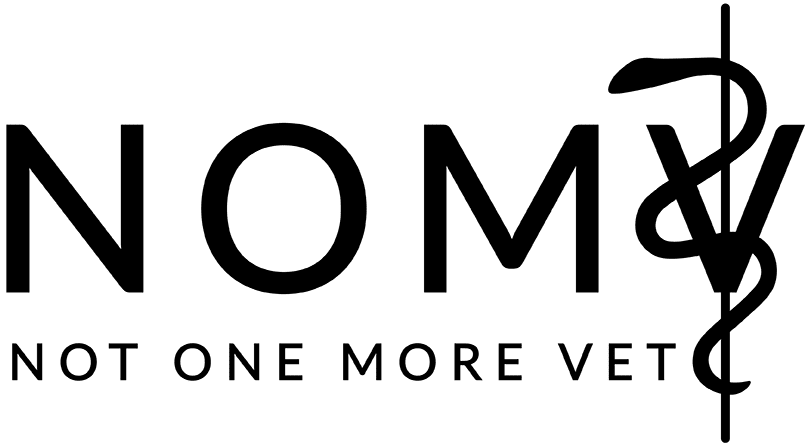Creating an Inclusive Veterinary Practice
By: Kendall Johnson, Volunteer Coordinator
Introduction

Creating a more inclusive and supportive veterinary field begins with a commitment to diversity, equity, and inclusion (DEI). The principles of DEI foster an environment where all feel welcome regardless of race, ethnicity, religion, gender, sexual orientation, or socio-economic background. Embracing DEI in the veterinary industry allows veterinary professionals to better support a diverse client population with unique needs. In addition, a team with diverse perspectives and experiences can provide better care to animals through increased creativity, innovation, and problem-solving (Veterinary Practice Resources, 2023). Prioritizing DEI not only strengthens veterinary teams but also enhances the quality of care provided to both clients and their animals.
Why Inclusion is Important
Inclusion is a critical component in addressing the lack of diversity within the veterinary industry and ensuring equitable opportunities for all professionals. An inclusive work environment is one in which employees can be their authentic selves while remaining comfortable and supported by the organization. According to the Bureau of Labor Statistics, nearly 90% of veterinarians identify as white (2020). The underrepresentation of Black, Indigenous, and People of Color (BIPOC) in the veterinary field limits the talent pool, reduces mentorship opportunities for BIPOC professionals, and contributes to disparities in access to quality care, especially in underserved communities. On the other hand, implementing DEI practices can create a safer work environment that fosters inclusive-thinking and enhances morale and sense of value for staff and clients (Bast, 2024). By embracing DEI practices, the veterinary field can begin to close representation gaps, improve workplace culture, and deliver more equitable care to diverse communities.
Making Clinics More Inclusive
Creating a more inclusive veterinary profession begins with intentional efforts to promote equity in hiring, education, and workplace culture. Veterinary professionals can work to make their practices more inclusive by addressing disparities and removing financial barriers in hiring practices. Ensuring transparency and fairness in recruiting is crucial, and intentional effort should be made to seek diverse candidates. Strategies such as blind resumes and application reviews can remove implicit bias. Providing equal access to veterinary education, scholarships, and mentorship programs creates a level playing field for students from all backgrounds. According to Dr. Evan Morse, being acquainted with a veterinarian and having the opportunity to shadow or intern can be deciding factors for minority students pursuing a career in veterinary medicine (Soldavin, 2011).
In addition to making hiring practices more equitable, veterinary practices can show their commitment to DEI through a clear statement on the practice’s website, job postings, and social media. Investing in training for staff, such as implicit bias awareness and cultural competency, can help staff be better equipped to navigate cultural differences and address bias, leading to more inclusive, respectful interactions (Perry, 2024). By prioritizing fair hiring practices, transparent communication, and ongoing DEI training, veterinary practices can foster a more inclusive environment that benefits both staff and the diverse communities they serve.
Conclusion
Fostering diversity, equity, and inclusion within the veterinary industry is essential for providing high-quality, culturally competent care and for cultivating a healthy, supportive workplace. By addressing disparities, improving representation, and actively removing barriers to entry, the field can better reflect and serve the communities it supports. Inclusive practices in hiring, education, and professional development create opportunities for underrepresented individuals while enriching the industry with varied perspectives and experiences. As veterinary practices commit to DEI through policy, training, and intentional outreach, they help shape a future where all professionals and clients feel seen, valued, and empowered.
Resources
There are several resources available to veterinary professionals who wish to improve DEI practices in their profession:
- AVMA: Read about AVMA’s commitment to diversity and inclusion, find podcasts, webinars, and team programs for promoting DEI in the workplace
- AAVMC Diversity Program: Includes assessment tools and information for organizations looking to promote inclusive cultures
- BlendVet: Offers educational experiences promoting diversity in veterinary medicine
- CLEAR Blueprint by NOMV: A practice certification program designed to support wellbeing
- Journey for Teams: A comprehensive and collaborative program that engages and empowers individual members of every veterinary team to build support and understanding of DEI from the ground up
- PrideVMC: Professional organization whose mission is to create a better world for the LGBTQ+ veterinary community
- NABV: National Association for Black Veterinarians
- VOICE: Veterinarians as One Inclusive Community for Empowerment
Sources
Bast, Jaime. “Navigating Diversity, Equity, Inclusion in Veterinary Medicine.” Zoetis, 28 Mar. 2024, www.zoetisus.com/petcare/blog/navigating-diversity-equality-and-inclusion-in-vet-medicine.
“DEIB in Veterinary Medicine | DVMC.” n.d. Diversify Veterinary Medicine Coalition. Accessed February 12, 2024. https://diversifyvetmed.org/.
“Diversity, Equity, and Inclusion in Veterinary Medicine.” American Veterinary Medical Association, www.avma.org/resources-tools/diversity-and-inclusion-veterinary-medicine.
Nolan, R. Scott. “Tips for Making Diversity, Equity, Inclusion a Reality in Your Practice.” American Veterinary Medical Association, 1 Sept. 2022, www.avma.org/news/tips-making-diversity-equity-inclusion-reality-your-practice.
Perry, M. D. (2024). Creating an Inclusive Experience for Veterinary Clients. Veterinary Clinics: Small Animal Practice, 54(6), xi-xxii.
“Embracing the Power of Diversity, Equity, and Inclusion in the Veterinary Industry.” Otto, 7 Jan. 2025, otto.vet/dei-veterinary-industry/.
Soldavin, Kelly. 2011. “Embracing Diversity in Veterinary Medicine.” Today’s Veterinary Practice. 01 Sept. 2011.
Veterinary Practice Resources. “Why Dei Is Important in the Veterinary Industry.” PetDesk, 23 Feb. 2024.petdesk.com/blog/why-diversity-equity-and-inclusion-is-important-in-the-veterinary-industry-and-what-to-do-about-it/.
Recent Posts
About Us
NOMV addresses well-being in the veterinary medical community through evidence driven programming that raises awareness on mental health in the community while providing innovative prevention and intervention programming.
